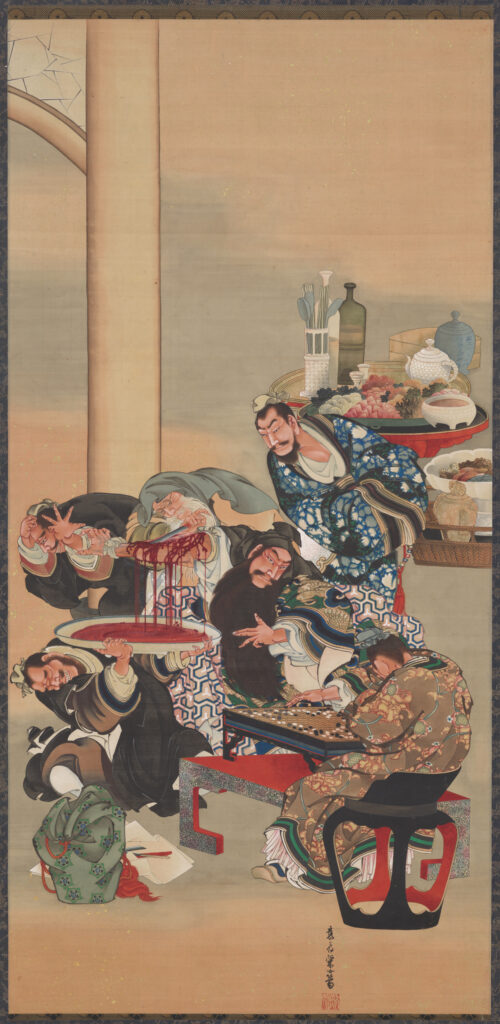
The Cult of Guan Yu

Guan Yu, The Historic Figure
While Guan Yu is one of China’s most popular and widespread Gods, information on the historical figure of Lord Guan is surprisingly limited. What we do know is largely derived from oral histories, and was not translated into writing until decades after his death.1 Despite, or perhaps due to a lack of concrete information, his story has become a defining legend throughout China and its’ diaspora, becoming embellished and exaggerated over the years as his cultic status grew.
Guan Yu lived in the late Eastern Han Dynasty, around 200 CE. This was a highly unstable time in Chinese history, to put it mildly. The collapse of the Han Dynasty is viewed as a crucial turning point, as the Han dynasty is commonly understood to be a golden age of ancient China, and defined several aspects of the Chinese identity. This provides some insight as to what makes Guan Yu’s life so important to the Chinese and diaspora.
During the collapse of the Han Dynasty, Guan Yu began his military career under Liu Bei, pledging his loyalty to him. When Guan Yu was captured by Cao Cao, he was treated lavishly in hopes that Guan Yu would defect to him. However, Guan Yu maintained his loyalty and defected back to Liu Bei’s army. In Guan Yu’s cult, loyalty is one of his defining traits for this reason. Another of his spiritual aspects, the control of rain and snow, was created around 220 CE when an opposing army which Guan Yu was fighting was washed away by heavy rains.2 Soon after this event, Guan Yu was killed by a rival general, Sun Quan.


Evolution of Guan Yu’s Worship
While Guan Yu’s life was short and shrouded in mystery, he has continued to be reinterpreted and assigned increasing importance within Chinese cosmology. This deification process began almost immediately after his death, when his final descendant was killed in 265 CE. This allowed for Guan Yu to be worshipped by a cult of the people, rather than being limited to an ancestral cult.3
The earliest worship of Guan Yu viewed him as a restless spirit, as he had died before he had spent all of his life force. This sort of ‘hungry ghost’ worship was commonplace at the time, though it was severely critiqued by Daoist scholars. 4 Guan Yu was feared by his followers, as potentially a potentially vengeful and demonic figure given his unsatisfied life force. Worshippers would offer freshly killed animals to Guan Yu to satisfy their latent life force, and prevent retaliation.
By around 1300 CE, Guan Yu had begun to be regularly invoked by Daoist Ritual Exorcists. 5 His status during his life as a military General, as well as his preexisting worship as a violent, but potentially useful spirit, made him a powerful figure during exorcisms to fight off demons. He began to be referred to as an ‘Exorcist General’ and gained increasing importance in Daoist cosmology. This tradition continued for centuries afterward, eventually spreading to the United States as well in the Kwan Tai Temple, a Daoist Temple dedicated to Guan Yu. More information on the Kwan Tai Temple can be found in the ‘California’ section of the site.

Guan Di, Saint of War

Parallel to his rise in prominence in the Daoist tradition, Guan Yu grew in importance to Buddhists as well. He was viewed as a protector of Monastaries and Temples, warding off bandits and invaders. Outside of these more specialized traditions, Guan Yu’s cult was constantly growing from the 1100s onward, through more ad-hoc folk religion.6
Guan Yu’s worshippers spread across China as tales of his help spread from village to village. He was invoked to help fight demons which might plague the people, or to ward off bandits, or to heal someone from illness, or even to bring rain. During the Ming Dynasty, the Romance of the Three Kingdoms, of which Guan Yu is central to, was expanded into the dominant literary tradition of China.7 Guan Yu’s loyalty and strength were lionized in these retellings, exposing him to even more worshippers throughout the dynasty. Guan Yu became one of the most popular deities in China.
As literacy increased throughout China, Guan Yu became a more literate deity. His presence was particularly needed surrounding the civil service examinations, an examination used to select members of the imperial bureaucracy. While Guan Yu had been historically worshipped by the rural lower class, he became extremely popular among the educated literati. He began to be referred to as guanfuzi, a clear allusion to Confucius’ Chinese name kongfuzi.8 Through spirit writing, Guan Yu wrote several morality books, some apocalyptic in nature. He became known as an enforcer of morals, and someone who would violently punish those who behaved immorally.9
